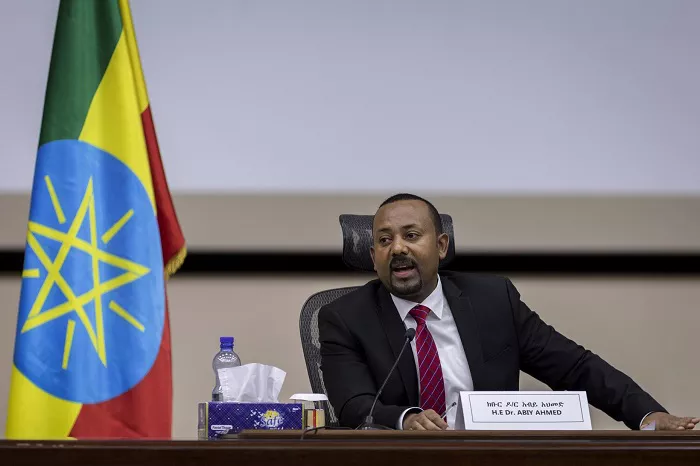Addis Ababa, June 22, 2025 (ENA) — Ethiopia is undergoing a major economic transformation driven by bold reforms, strategic investments, and a strong focus on inclusive and sustainable growth. Since launching the Homegrown Economic Reform Program in 2019, the government has taken decisive steps to stabilize the economy, lower inflation, and unlock long-term development.
For years, the country faced serious economic challenges—including high inflation, foreign currency shortages, and growing public debt. In response, Ethiopia introduced one of Africa’s most ambitious reform agendas, targeting key areas such as monetary policy, exchange rate liberalization, debt restructuring, and financial sector development.
A historic milestone came in 2024, when Ethiopia liberalized its foreign exchange system for the first time in 50 years. The government replaced the long-standing fixed exchange rate with a market-based system and ended direct central bank financing of the national budget. At the same time, the National Bank of Ethiopia (NBE) adopted an interest rate-based monetary policy, launched open market operations, and revised its governing law to prioritize price stability.
Speaking at the 2025 IMF–World Bank Spring Meetings, NBE Governor Mamo Mihretu said the reforms are aimed at “correcting structural distortions, reducing inflation, easing foreign exchange shortages, and supporting sustainable growth.” Early signs are promising: inflation has dropped from 30% to 13%, and foreign exchange reserves have tripled. Inflation is expected to fall to 10% by the 2025/26 fiscal year.
To back these reforms, Ethiopia secured a $3.4 billion Extended Credit Facility from the International Monetary Fund in July 2024. This agreement opened the door for debt restructuring and signaled growing international confidence in Ethiopia’s economic direction. As a result, the country is now viewed as a more stable and credible investment destination.
Another major milestone was reached in January 2025 with the launch of the Ethiopian Securities Exchange (ESX), the country’s first stock market. Private investment banks such as CBE Capital and Wegagen Capital were also licensed, paving the way for deeper capital markets and a stronger financial sector.
The economic reform program is also supported by significant public investment, with nearly 10% of GDP directed annually toward infrastructure. Flagship projects include the Grand Ethiopian Renaissance Dam (GERD), which is helping Ethiopia become a regional clean energy exporter; the Addis–Djibouti electric railway, which has reduced freight travel time from three days to ten hours; and the expansion of 145,000 kilometers of road networks.
Agriculture, a key sector, is seeing major gains. Ethiopia has become Africa’s top wheat producer, harvesting a record 23 million tonnes in the 2023/24 season. Thanks to cluster farming, mechanization, irrigation, and climate-resilient seeds, the country has moved from being a wheat importer to a wheat exporter.
This progress earned global recognition in January 2024 when FAO Director-General Qu Dongyu awarded Prime Minister Abiy Ahmed the Agricola Medal, the FAO’s highest honor. The award celebrated Ethiopia’s “Wheat for Food Self-Sufficiency Programme” and the Green Legacy Initiative, a massive tree-planting campaign that links food security with environmental protection.
Still, the reforms have not come without short-term costs. Price increases during the transition have strained household budgets. To ease the burden, the government introduced a social protection plan that includes targeted subsidies for essentials like fuel and food, along with public works programs to create jobs in agriculture and infrastructure.
Industrialization is also gaining momentum. Modern industrial parks such as Hawassa Industrial Park are creating thousands of jobs, especially for women and young people, in sectors like textiles, leather, and agro-processing.
With GDP growth projected at 8.4% for 2024/25, Ethiopia is emerging from economic distress with renewed strength. Global institutions including the IMF, World Bank, FAO, and the European Union have praised the reform program as homegrown, data-driven, and led by Ethiopian priorities—not external mandates.
The IMF in particular has commended Ethiopia’s shift to a liberalized exchange market and interest-rate based monetary policy. It also acknowledged the country’s success in restoring macroeconomic stability, reducing inflation, and improving fiscal discipline.
Today, Ethiopia stands as the largest economy in East Africa and the third-largest in Sub-Saharan Africa.
Far from being just a technical exercise, Ethiopia’s economic reform is a national vision of renewal—centered on self-reliance, economic sovereignty, and inclusive prosperity. With strong leadership, global support, and the resilience of its people, Ethiopia is turning challenges into opportunities and charting a bold, homegrown course toward a brighter future.


